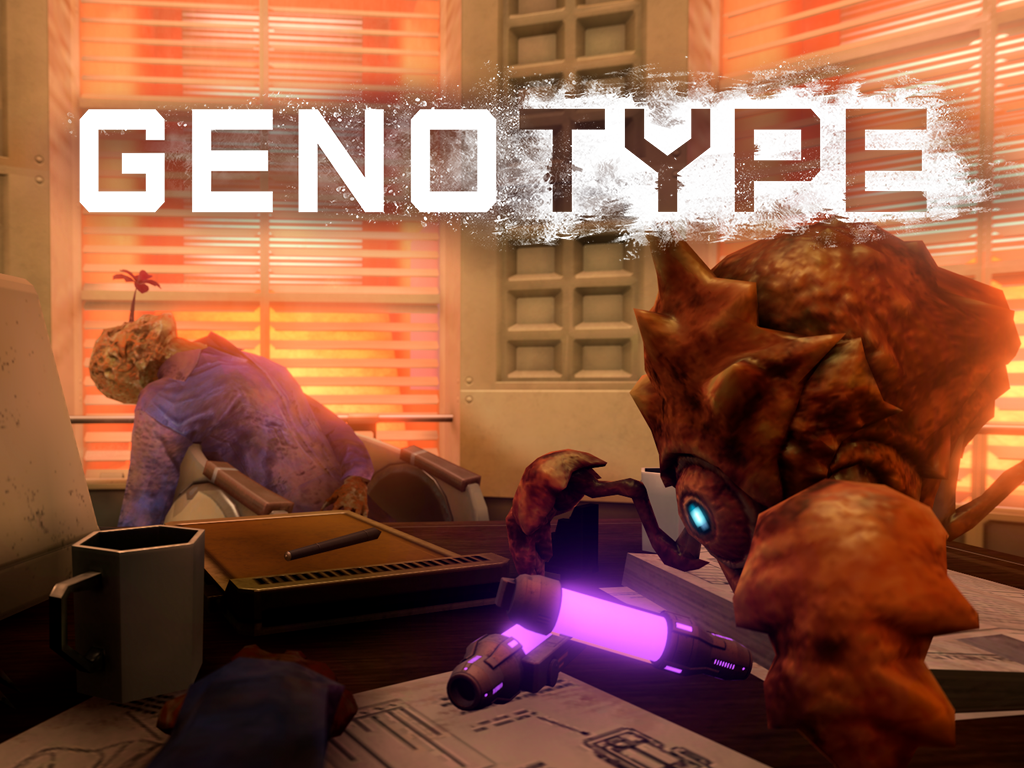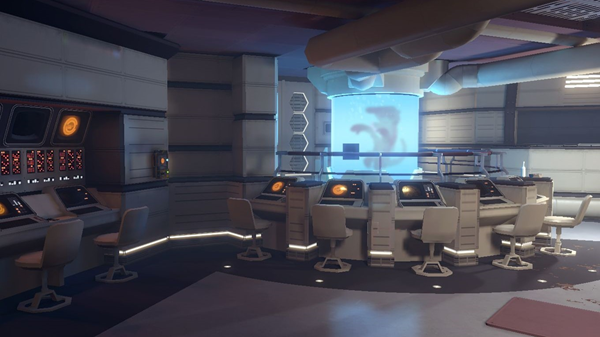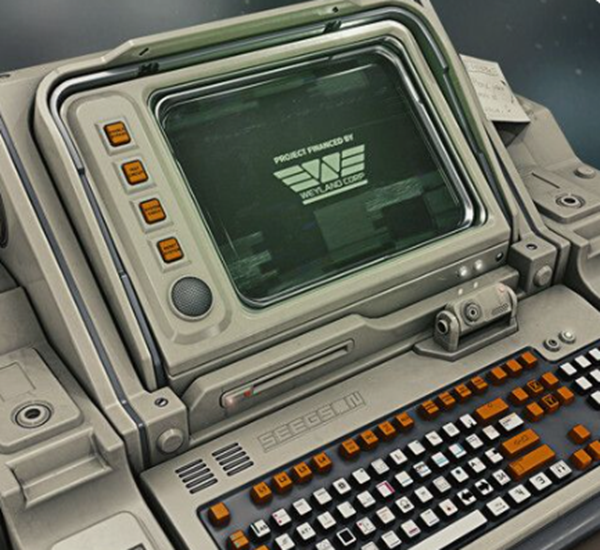
First, let’s agree that aesthetics in video games is the combined expression of sound, graphics, and design choices. In the following, we talk to Frederik Bager and 3D lead Anders Bruhn Pedersen about the latter.
Why aesthetics matter, and how the creators of Genotype decided on theirs.
VR: Genotype is sold on all Meta Quest platforms, coming to Steam, and needs your vote for IOTY!
It’s like greenhouse strawberries in the Fall; they look beautiful. The color is perfectly red. The shape? Absolutely strawberry. But the smell and the taste are flat and dull and disappointing.
Likewise, a game’s visual appearance can rarely stand alone. Some try, though: Often, they push the hardware, but the game soon becomes indistinguishable from other titles in the genre.
But how do you create a berry rich in flavor? A game where aesthetics and gameplay support each other?
“Form should follow function. Our work supports the gameplay, sells it even, immerses you, and keeps you in the World,” says Frederik Bager, lead concept artist at Bolverk Games. Bolverk Games recently published a sci-fi VR game named Genotype.
First, let’s agree that aesthetics in video games is the combined expression of sound, graphics, and design choices. In the following, we talk to Frederik Bager and 3D lead Anders Bruhn Pedersen about the latter.
Picture: Early concept art from Genotype.
Hammer it with a reality bat
Once the main pillars of the gameplay, mechanics, and setting are (mostly) in place, Frederik Bager and Anders Bruhn Pedersen discuss options. The duo has worked together for seven years, and they have a process of operation.
“Anders clobbers everything with a reality bat,“ says Frederik Bager and clarifies that Anders Bruhn Pedersen is not a hater of all things in existence. It is merely an inclination to stay within the realm of possibility. Even if it’s only ideas and even if he likes them.
During this initial phase of Genotype’s development, an important thing to figure out was the rules for the universe. From the beginning of the project, they knew they wanted a 70s and 80s-inspired retro sci-fi universe where tech is bulky and rarely portable.

Picture: Early in-game image from Genotype.
To hologram or to not hologram
Frederik Bager and Anders Bruhn Pedersen happen to agree that thick computer screens and massive buttons are cool. And there are other advantages to the 1970s take on science fiction.
“In VR, it’s nice if the objects are big and chunky. It works well in the hands of the player, and you avoid the clinical “hologram-look.” Plus, it saves polygons,” says Frederik Bager.
“In a universe far far away, holograms are a popular method of communication, often packed into tiny devices. Along with other bits of smooth tech, this brings an otherwise fairly grungy universe to a level of sci-fi that feels very futuristic. While that’s very appropriate for space-faring journeys such as Star Wars, we felt that the smaller, earthbound story of Genotype, would benefit from not having this kind of tech,” says Anders Bruhn Pedersen.
Once the two decide on what they find interesting about the game, they collect reference images to help them become particular with their ideas. After a sorting process, only the essential images are left.
“Then we start stealing from the real world,” says Frede Bager.
“To find the correct sci-fi levels, we looked at many different sci-fi universes from the 60s through the 80s and compared the most obvious points of contrast,” says Anders Bruhn Pedersen.
Inspiration often comes from the movies.
“The 1970s sci-fi aesthetics doesn’t take itself too seriously. It’s a bit bizarre, weird. As long as it doesn’t become cartoony… Both of us also love the style and universe in Alien, so that’s been a big inspiration,” says Frederik Bager.
Helping the story
Having settled on the first Alien movies as a strong reference for the tech level, they took a step back and looked at the general atmosphere of the universe and the facility the player would find themselves in.
“Did we want this entire base to be a gritty industrial place where one could easily imagine blue-collar workers laboring away at their daily chores? The answer was “Yes, but actually no”,” says Anders Bruhn Pedersen.
Whereas industrial themes certainly have a strong place in Genotype, they wanted to lean into the more hopeful vision of the future typically seen in classic sci-fi such as Star Trek and Buck Rogers.

Picture: The console is from an Aliens movie, which inspires Genotype. The team uses “reference
images” to ensure artistic consistency throughout the production.
The design and aesthetics also help the story.
“It’s a mixture of storytelling and pure visual art, like a movie. In fact, I don’t think there is any difference except that games are interactive,” says Frederik Bager.
He elaborates on how the design adds flavor to the game:
“In the beginning, we dream. About how we tell the little untold stories through the environment. Like a dead scientist with something in his hand combined with an audio log. Or a whiteboard with text half erased. It adds some depth. There could even be a hint to the puzzle in there somewhere or hints to the backstory. We dream early but implement late because the design has to add to the story and the gameplay.”
Hopefully, in the end, you have a lush, flavor-bursting summer strawberry. Enjoy.
The game
In Genotype, you explore an Antarctic research base overrun by monstrous beasts, wielding high-tech gloves that print living organisms you can use as weapons and survival tools.
- Print creatures and use them as weapons to fight off aggressive beasts.
- Transform into other beings to move through vents, and use them as tools to clear environmental obstructions.
- Upgrade your creatures’ DNA to enhance their capabilities, and customize your GRAID gloves to increase your survival chances.
- Enjoy high-fidelity graphics that take full advantage of the Meta Quest platforms’ graphical potential.
- Immerse yourself in an emotional narrative with fully voice-acted characters.
- Dive into a world with truly alien sound design and atmospheric synth-scapes.
You play as Evely, an intern at an Antarctic weather station. During a routine expedition, Evely falls through the ice into the mysterious Snowdrop Initiative laboratories. Luckily, the facility’s last human survivor, William, can guide her to save herself — and the entire planet.
The Studio
Bolverk Games is an award-winning indie studio based in Denmark focused on VR games and software. We were among the first to realize how VR gaming could be more than a novelty, and we are still at the forefront of a growing market, always exploring VR’s potential.
www.playgenotype.com
www.bolverkgames.com
For quotes and comments, contact press@bolverkgames.com.
Genotype is a contestant for Indie Of The Year – don’t forget to vote!